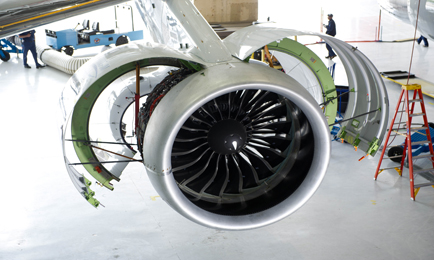The rise of 3D printing for manufacturing is so often touted as a global trend in manufacturing, its become difficult to sort the hype from the reality.
The reality is almost 30 years old. Stereolithography, where layers of material are cured by a UV light, was first commercialised in the US during the late 1980s. During the 1990s other 3D printing methods, such as laser sintering and materials deposition were developed as rapid prototyping became commonplace. Then in the early 2000s, when engineers began to realise that the technologies being developed could be applied to manufacturing, the term additive layer manufacturing (ALM) was coined.
Today, one of the early adopters of ALM technology is the aerospace sector. The complex geometries needed for airflow and cooling, plus the drive to lightweight aircraft, mean aerospace engineers are at the forefront of technology to shape metals and composites. Likewise, the long production timescales and relatively short production runs of aircraft also play to ALM's strengths.
Aerospace firms all around the world are introducing ALM parts into their products. European aerospace and defence giant EADS uses ALM to produce components for its satellites and in some of the internal piping in its Eurocopter. According to the company one of the strongest barriers to ALM's further use currently is certification for the parts. EADS is working with engineering firm GKN on certification for ALM-produced parts as part of a research partnership.
But the furthest forward is the aerospace sector in the US. Laser-sintered ALM cooling ducts were first used by Boeing in the F-18 jet fighter around 13 years ago. The company’s newest commercial passenger aircraft, the 787 Dreamliner, has 32 laser laser-sintered components. All are non-critical parts, like air ducts.

Later this year, the use of ALM will hit a critical milestone when Bombardier’s new C-Series jet conducts its first passenger flight. The aircraft is the first to use Pratt & Whitney’s Geared Turbofan engines. The Geared Turbofan is the first aeroengine to contain ALM-produced parts. Operating conditions don't get much more critical and extreme than the engine of the aircraft and the C-Series' first flight will be the first time an aircraft carrying passengers and an engine with ALM parts has flown.
Tom Prete, vice president of engineering for Pratt & Whitney, is responsible for the introduction of ALM parts into the Turbofan engine and its manufacturing supply chain. He says that ALM parts have been flown on testbeds “numerous” times in the past year and a half. Rapid prototyping has also been used extensively to speed up the development of different design iterations of the Geared Turbofan. “But the step to production is mainly being driven by cost reduction,” he says. “We have been able to take cost out of some parts using this technology and greatly reduce tool lead times.
“Every different part has a separate business case. We apply the additive manufacturing benefits, determine the cost savings and part enabler from a design point of view. We look at the ways the part is currently being manufactured, compared to what additive manufacturing brings to the table.”
Prete says that there are number of high level benefits to be gained from ALM. It can dramatically reduce production time. It is more efficient than subtractive production methods such as forging or casting because it reduces the waste and consumption of the raw materials. ALM is also more precise, can produce complex geometric features on parts, reduces lead time on cooling and is lean because it reduces the amount of inventory you need.
For example when an oil nozzle is fabricated with traditional means it has to take tubes and nozzles and orifices using brazing. Additive manufacturing can just create the part in one pass, enabling substantial savings. The materials the ALM process uses are also the same. Pratt & Whitney is using the titanium and nickel alloys it already uses on its engines, tailoring the additive manufacturing process to create properties consistent with current materials.
“ALM does have limitations,” admits Prete. “When you have a lot of parts that are being produced with a casting, its always going to be difficult for additive manufacturers to compete on a cost basis. Once you have the tooling and your product on the dye, it’s very cheap.
“But, as we continue to invest in the technology the basket of ALM parts is getting bigger. And we are beginning to learn that the real advantage of additive manufacturing is designing the parts in favour of additive manufacturing.”
Pratt and Whitney will not disclose exactly how much in total they have invested in additive manufacturing. But they have funded a $4.5m research centre at the University of Connecticut and are committed to investing $3.5m a year there over the next three years. The investment in academic research not only helps the firm develop manufacturing technologies and techniques, but also recruit talent into the firm.
At the University of Connecticut research centre they are looking into how to improve and optimise the ALM process for specific parts and alloys. Parameters being looked at include the powder size, the powder purity, the number of times the powder can be used before it is cleaned, the process parameters of power input, and the speed of the laser.
However, Prete cannot forsee a time when ALM completely replaces other manufacturing technologies. He says an engineer needs to have the right mix of tools in the bag: “In industry we tend to say there is a new material, there is a new manufacturing process and everyone jumps on the wagon.
“But we always take a broad look at the technology. Being able to apply different manufacturing techniques to different types of parts, which includes additive manufacturing, but can include a lot of other advanced manufacturing techniques, provides a big benefit – it allows you to broadly leverage your technology across many parts.”